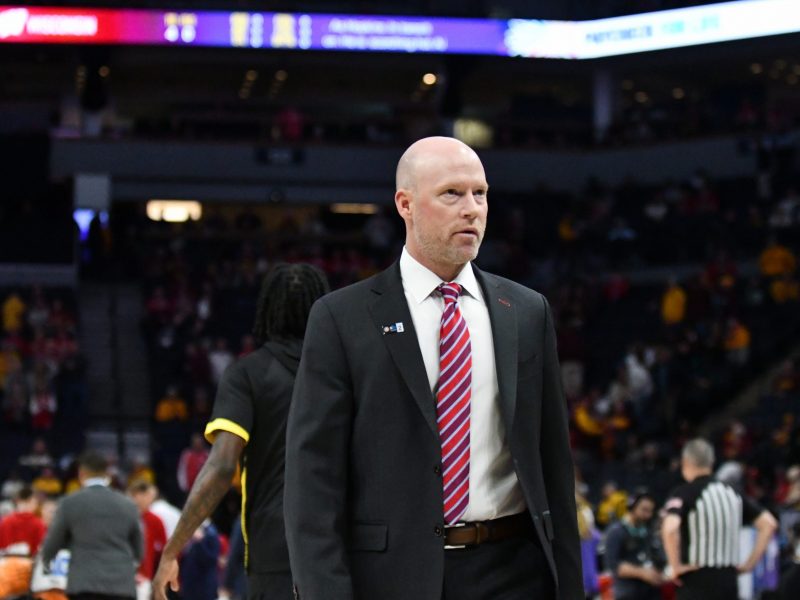Brenda Frese tries not to compare this year’s Maryland women’s basketball team to last year’s squad.
It’s not a difficult comparison to make from the outside, especially because this year’s Terps sport a near-identical roster from a year ago. But even that doesn’t prevent change. A player’s personality can change, the team’s chemistry can change, but above all else, circumstances change.
Frese and her team have dealt with those changes, but they’ve led to demonstrably different on-court results.
“That’s why you can’t think one season is going to be the same in the next season,” Frese said on Tuesday. “You have a lot of the same players back but it’s a different team, so I don’t compare it to last year because this is what’s been created this year.”
Last year’s Maryland offense scored over 122 points per 100 possessions — the best offense in the nation and the best unit for the program since the 2009-10 season, the earliest year the data is recorded.
Graduate transfers Katie Benzan and Chloe Bibby fit in seamlessly with juniors Diamond Miller and Ashley Owusu. Even the one thing that went wrong, sophomore Angel Reese’s 2020 injury, allowed Mimi Collins a chance to prosper as a starting forward.
The team laid waste to the Big Ten, winning both the regular season and postseason conference titles. Despite a disappointing loss in the Sweet 16, optimism reigned among the Maryland faithful.
It seemed logical that the return of Benzan and Bibby along with a now-healthy Reese, an exciting freshman in Shyanne Sellers, and another year of development for Owusu and Miller would allow the Terps to continue their offensive dynamism.
Instead, after this year’s regular season and Big Ten tournament, Frese described her offense as “erratic.”
[After deflating Indiana loss, Maryland women’s basketball awaits NCAA Tournament path]
“Very similar to kind of what the season’s been like, obviously I think the team’s frustrated, they’re disappointed,” Frese said. “We have yet to have… the continuity and the consistency that you need to have on both ends of the floor.”
Maryland’s offense is still very good, averaging 107.3 points per 100 possessions. But the volatility that’s shaped the decline in offense has proved costly.
The Terps have scored under 60 points in four games this season after not doing so at all a year ago — they lost all four of those games. They’ve shot under 40 percent from the field in nine matchups after only doing so twice last year, losing seven of those games.
They did both in the first and only game of their Big Ten tournament, scoring 51 points and shooting 31 percent from the field in their loss to Indiana.
“We just didn’t have that flow in our offense,” Bibby said after that loss.
Maryland’s scoring margin per 100 possessions is about half of what it was a year ago, dropping from 29.5 points to 15.2 points. Its defense is almost exactly what it was a year ago, meaning the drop is entirely due to the offensive production.
For Frese, the main change between this year’s offense and last year’s is how her team shares the basketball.
“The ball moved last year, the ball sticks this year,” Frese said. “With good intentions, players are trying to bring it back, but it doesn’t work if you don’t share the basketball and move the ball side-to-side … that’s where they’re trying to get to.”
The Terps are averaging about five fewer assists per game than a season ago, dropping from fourth in the country to 29th. After leading the nation in assist to turnover ratio last year, they’ve dropped to 18th.
Usage rate measures the percentage of plays while a player is on the floor that ends with that player shooting, getting to the free-throw line or committing a turnover. It’s a stat that measures what percentage of offensive possessions end in a player’s hand.
Last season, only one player played over 30 minutes for Maryland and had under a 10 percent usage rate — Collins against Texas in the Sweet 16. This year’s Terps have had 11.
[Poor shooting plagued Maryland women’s basketball against Indiana]
Part of that can be attributed to a change in play style. Reese’s dominance has shifted the Terps to a more post-centric attack.
But arguably the biggest change comes from the changing circumstances, the constant shuffling of the roster due to injury and illness. Only Reese, Bibby and Sellers have been at every practice and game, according to Frese.
Miller, Owusu and Benzan have all dealt with illness, injury or both at various points this year. Faith Masonius was lost early in the year to an ACL tear while Channise Lewis never played due to recovery setbacks. Collins has been “in and out of practice” with a host of nagging injuries.
Even for a team that played together last year, not having any measure of continuity in games or practice took its toll as the team’s connectedness frayed. Maryland constantly had to adjust to playing without inactive teammates and then readjusting again to integrate those players once ready to play.
“It’s kind of been this roller coaster of a season,” Frese said. “Credit the girls, I mean at this point it is what it is and we can only control what we can control. That’s where they’re trying to put their best foot forward.”
The Terps are as healthy now as they’ll be for the rest of this year, and putting their best foot forward means using their two-week break to try and recapture that offensive flow.
“We’re encouraged we finally have almost two weeks of practice time,” Frese said. “So hopefully if we can have everybody on the practice court together at the same time we’ll be able to get a rhythm back.”
Statistics via Her Hoop Stats.



